Projects need management. Much of the focus of project management is obviously on methodologies that keep your project on time and within budget. But you don’t want to initiate a loss leader.
That’s where project selection comes in. Project selection is all about picking the right project at the right time for your organization. It sounds like it’d be simple, but there are a lot of factors to consider.
What Is Project Selection?
Project selection is the process of establishing a criteria for evaluating project proposals to ensure they align with the larger strategic objectives of an organization and will bring the most financial, operational and strategic benefits. This occurs during the project intake process for program management and project portfolio management.
All selection methods are based on two criteria: benefits and feasibility. The benefits of the project take the form of a list of positive outcomes. Reasons to take on a project include anything from economic gain to social and cultural significance, or even fulfilling commitments from previous agreements. Feasibility, in this context, means the likelihood of a project is a success. All projects are risky, and some are very complex. Determining the feasibility of any project can take time and a lot of research. This process is done in what is called a feasibility study, which is part of the project initiation stage.
Related: Free Feasibility Study Template for Word
The project selection process, whether you’re working in project management or portfolio management, ensures you have enough resources to benefit from the investment. Once you (or the selection committee) select a project, then you’ll need project management software to make sure you meet the goals and objectives.
ProjectManager is online work management software that is collaborative to the core. It connects teams no matter where or what they do. ProjectManager’s interactive Gantt chart organizes tasks, links dependencies, sets priorities, filters for the critical path and sets a baseline to measure planned versus actual effort in real time. Get started with ProjectManager for free today.
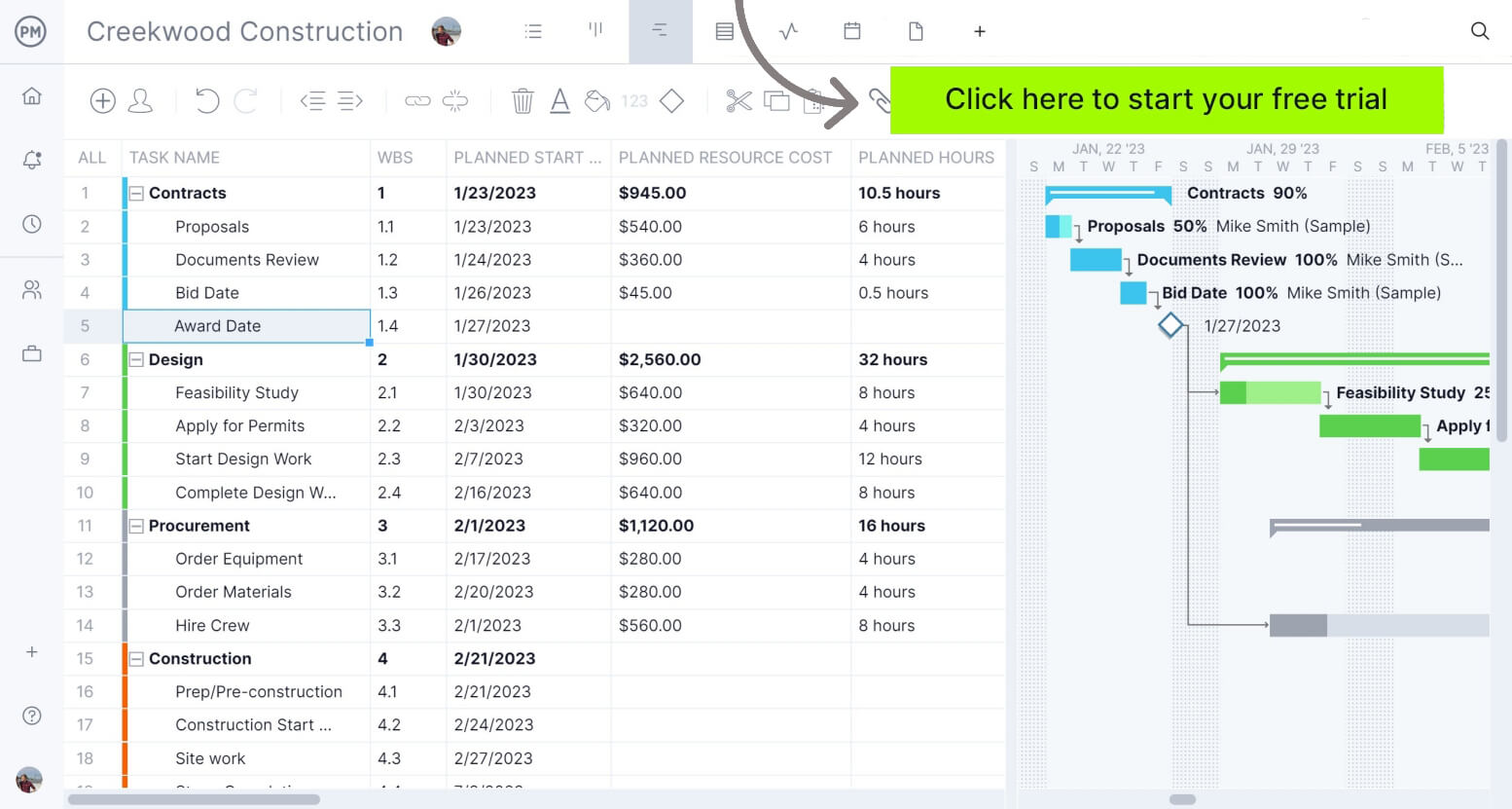
The Project Selection Process
The project selection process is the process of evaluating your project ideas in terms of benefits and feasibility. This can be done by the project portfolio manager, program manager or project management office (PMO). Effective project selection creates a better return on investment (ROI), which is the bottom line when talking about financial benefits for any project.
The project selection process will help you run a more efficient project. By doing the due diligence beforehand you can avoid a lot of the inefficiencies that might slow down a project or worse during execution.
Of course, the project selection process is essential to making sure the project you’re appraising will align with the overall strategic goals and objectives of the organization. This is true whether you’re working on a project or portfolio.
Project Selection Methods
These eight project selection methods will help you make the right decision when choosing a project. While there are many measurement methods, such as Six Sigma and constrained optimization, these project selection methods are the most widely used:
1. Cost-Benefit Analysis
Cost-benefit analysis is used to estimate the costs and benefits associated with a particular project. In other words, it’s a method to discover the most cost-effective way to execute a project. This is done by defining all the costs, both direct, indirect, intangible and more against the benefits, be they direct, indirect and so forth. ProjectManager has an article that provides a step-by-step guide to a cost-benefit analysis that goes into this in-depth.
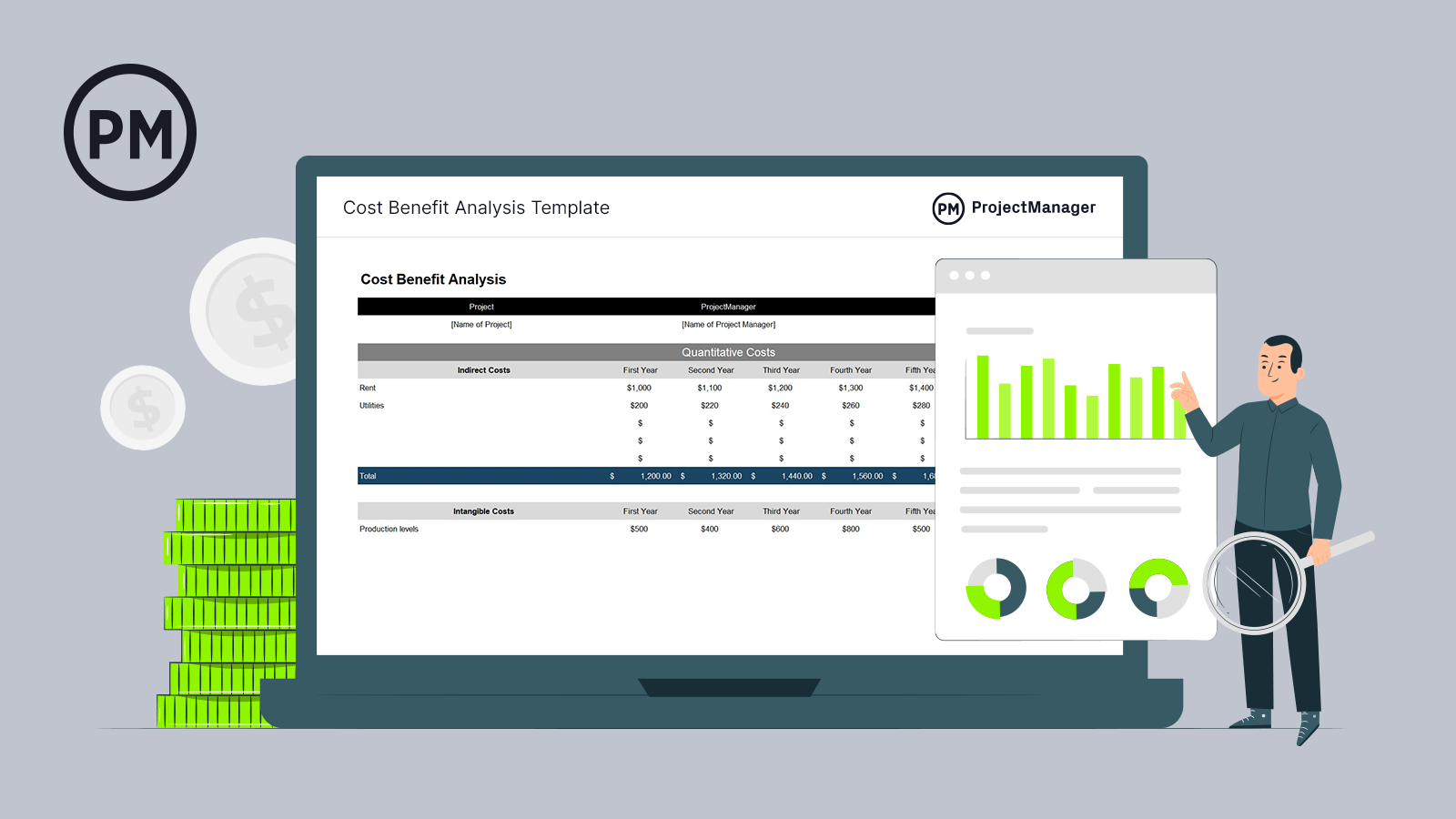
Get your free
Cost Benefit Analysis Template
Use this free Cost Benefit Analysis Template for Excel to manage your projects better.
2. Scoring Models
Scoring models are used when the project manager or project selection committee makes a list of project criteria and scores each according to their relevance, importance and priority. This gives a more objective view of the project. When done, you can put the projects in a list from best to worst, and the top project will likely be the one more beneficial and feasible to take on.
3. Payback Period
One criterion for a successful project is making back the money you’ve invested. The project payback period is a method to see the ratio between the total cash to the average cash period (payback period = cost of project / average annual cash inflows). In other words, you can determine how long it will take for you to recover the investment. However, it doesn’t consider the time value of money nor benefits accrued after the payback period or risk inherent in the project.
4. Net Present Value
Net present value is the difference between the current value of cash inflow and the current value of cash outflow in the project. It’s always a positive and the one with the highest net present value is the best project to select. Unlike the payback period, net present value takes into account the future value of money. However, it doesn’t give a picture of profit or loss and isn’t a method for figuring out the discount value used for the present value calculation.

5. Constrained Optimization Methods
This mathematical model of project selection is best when evaluating larger projects that are more complicated. There are three main techniques in the constraint optimization method; integer programming, linear programming and dynamic programming. While some will also use non-linear programming and multiple-objective programming, we’ll focus on the top three:
Integer Programming
This method involves looking at a decision that involves integer values, not fractional ones. This is a project, such as the manufacture of cars, razor blades or other items that cannot be divided into smaller pieces but delivered as a whole.
Linear Programming
This method is about reducing the project cost by shortening the time necessary to complete the project. Therefore, it involves the examination of how long it takes to run any particular activity in the project. If you have to add effort to an activity, that means it will cost more and likely be less attractive.
Dynamic Programming
This method is used to break complex problems into a series of simpler ones. However, you have to decide if the problem is suited for dynamic programming. If it is, then dynamic programming will help you make a sequence of correlated decisions. It allows you to see the best combination of decisions.
6. Internal Rate Of Return
This method deals with the interest rate when the net present value is at zero (that is, when the present value of the outflow is equal to the present value of the flow.) Another way to refer to this is as the annualized effective compounded return rate or discount rate that leaves the net present value of all your cash flows from an investment at zero. This method helps determine which project will offer your organization the greatest profitability.
7. Discounted Cash Flow
This method takes into account inflation or the likely fact that today’s money isn’t going to have the same value as the same amount of money in the future. Therefore, you need to take into account the discounted cash flow when calculating the cost investment and return on investment of any potential project or project proposal over the project life cycle you plan to undertake.
8. Opportunity Cost
This method is used when evaluating two projects. You choose by selecting the project that has the lower opportunity cost. The opportunity cost is the possible loss of a future return from the second-best option on your list of potential projects. In other words, it’s the potential return you won’t realize by taking the other project and must be part of your project management or project portfolio management.
Cost Benefit Analysis Template
This free cost-benefit analysis template allows you to compare the estimated costs of your project against its potential financial benefits, which is a very important step in the project selection process.
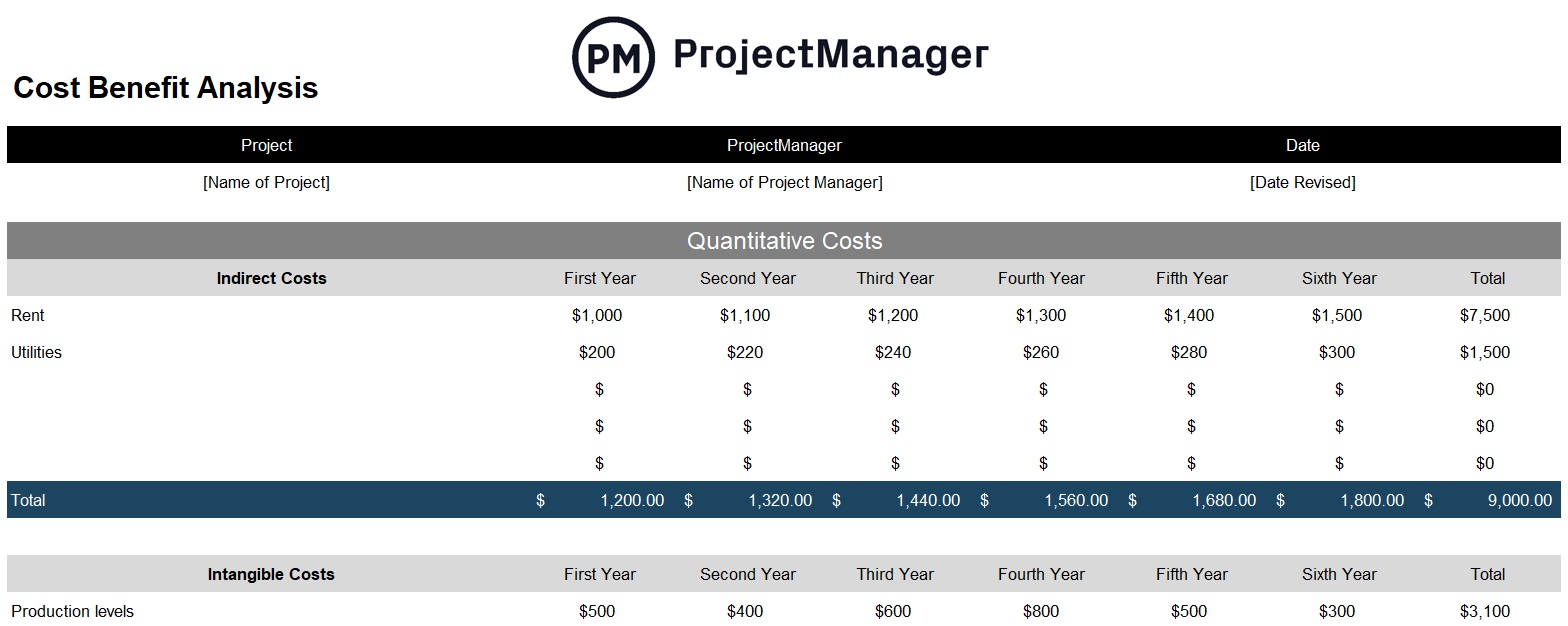
We offer a variety of free PMO templates you can use to manage all aspects of your projects, programs and portfolios.
How ProjectManager Helps After Project Selection
Once you’ve gone through the due diligence and have selected a project the real work of planning, monitoring and reporting begins. ProjectManager is online software that does all that in real time to keep hybrid teams collaborative and productive no matter where they are or how they prefer to work. Plus, by keeping everyone on the same page there’s one source of truth that allows for greater efficiency.
Collaborate With Your Team
Once you’ve planned your project with the interactive Gantt chart above then you can start onboarding and assigning your team. They can execute their work in one of the multiple project views, such as a task list, calendar or kanban board. The latter visualizes workflow and gives managers transparency into their team’s process, which allows them to quickly reallocate resources when necessary to keep work moving forward. Meanwhile, teams can manage their backlog and plan sprints together in real time.
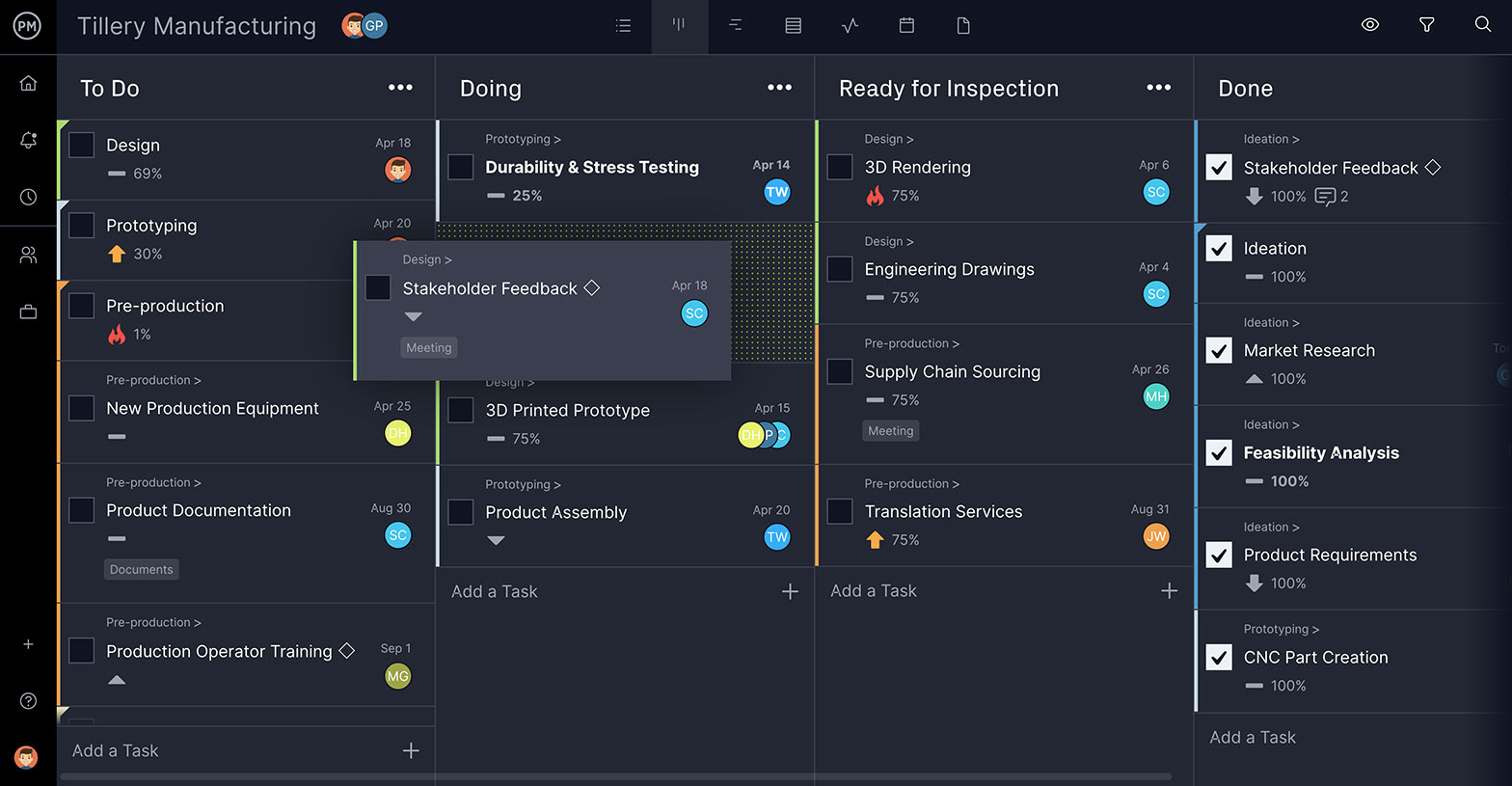
Track Project Selection Progress on Dashboards
Making sure you’re meeting your milestones is one way to keep on track. Our live dashboard gives you real-time data on six project metrics. Unlike inferior software that makes you configure the dashboard, ours is up and running the moment you open it. The real-time dashboard collects live project data, calculates it automatically and then displays time, cost, workload and more in easy-to-read graphs and charts. It’s like an instant status report.

Generate Reports Instantly
But sometimes you need more data, which is where our one-click reports come in. The many reports available include status and portfolio reports, timesheets, tasks and many more. Each report can be filtered to show only the data you want to see and then easily shared as attachments or printed out for stakeholder presentations to keep everyone up-to-date.
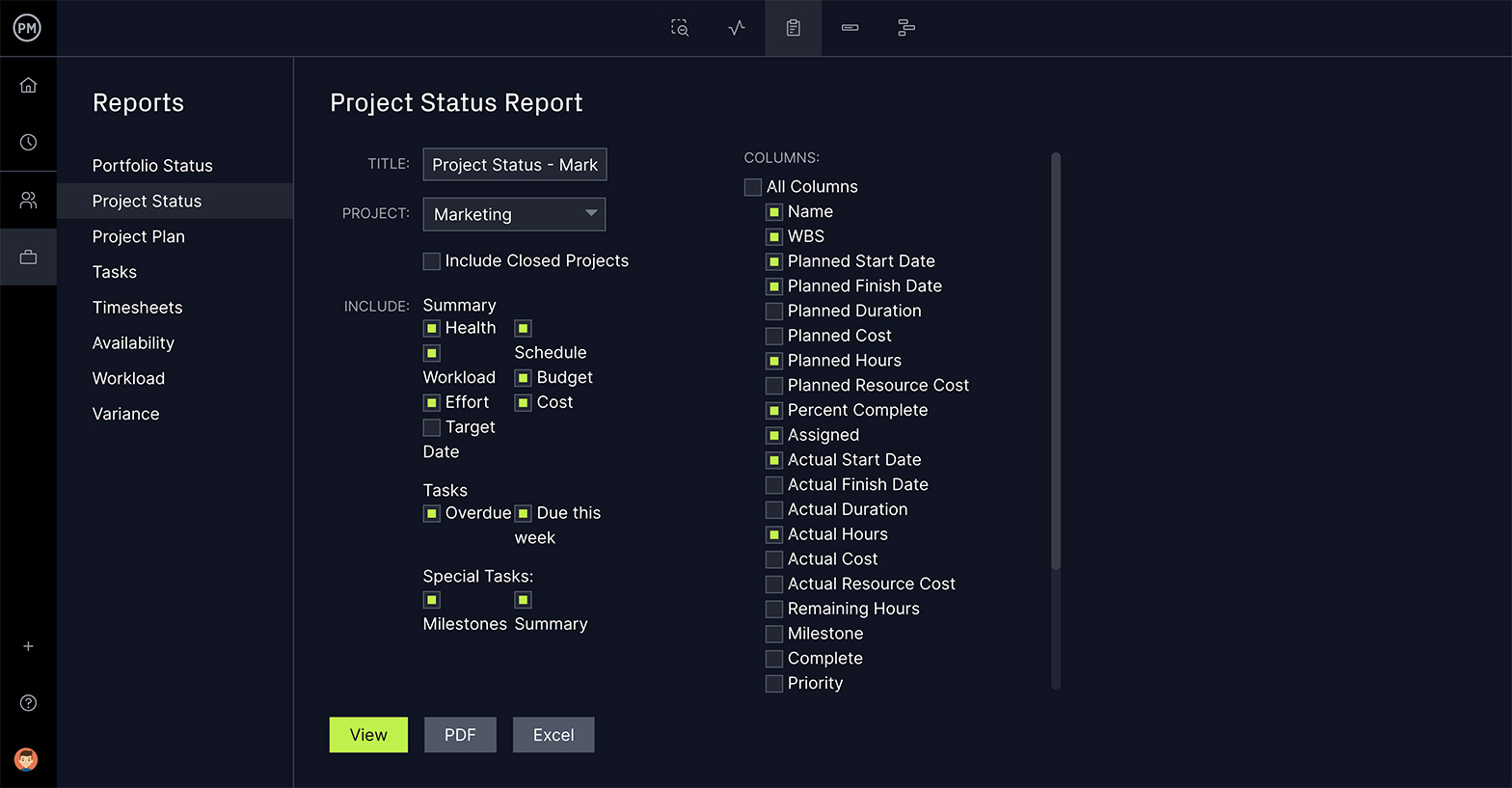
Selecting a project is crucial but so is managing one to deliver success. Our software is secure, notifies you if there are updates on comments on your tasks and keeps everyone updated and working together, no matter where they are. It’s easy to use for seasoned professionals or those with no project experience. Select the right project and the best work management software.
ProjectManager is award-winning hybrid work management software that keeps you organized and collaborating in real time. Join the 35,000-plus professionals already using our software at organizations from NASA to Siemens and Nestle. Get started with ProjectManager for free today.

